In our orchard, we have a few nectarine trees — some of our bigger ones — which produce later in the season; and God graciously granted a goodly amount of fruit on them this year! This time with the fruit, I tried to pick them before they were fully ripe as we’ve had what we believe are critters helping themselves to our edibles out there…birds probably, and we think maybe raccoons too.
Here the nectarines are on the trees:
And then, a couple of the buckets full:
Laid out on the tables to ripen some first, not touching so they don’t cause each other to rot:
Notice our little visitor hanging out in the chair on this one: 🙂
“Soldiers” all lined up ready for their duty of tasting yummy! You might say they’re in the “Nectarine Corp”! 🙂 Best eaten when with them you “Chew Raw!” 😀 (Was that too much?)
Then, it was time to cut up the nectarines and get them on the solar food dehydrator:
Here they are shrunken down and dried:
Collected and ready for storage:
And in their almost final resting place (the final resting place is in our bellies! 😀 )
As always, we are very grateful to the Lord for granting these provisions, and a way to store them without freezing or canning!
— David
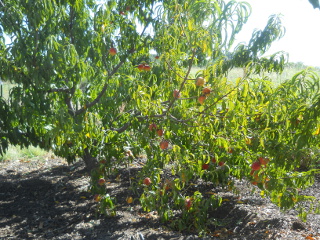
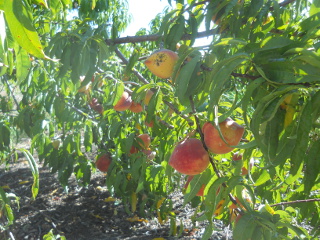
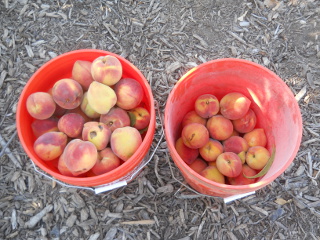
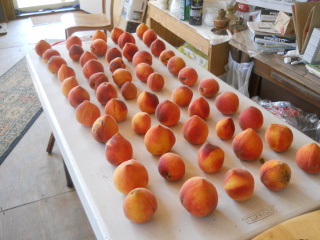
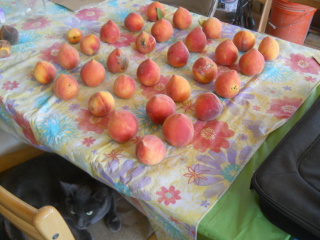
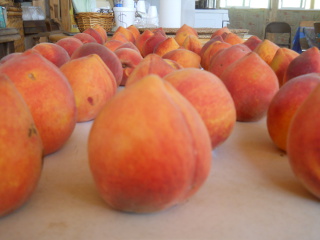
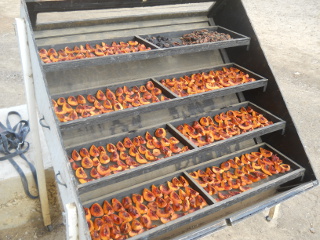
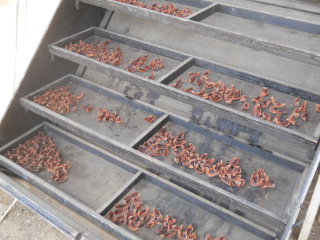
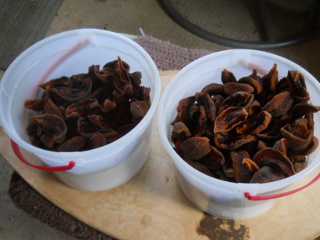
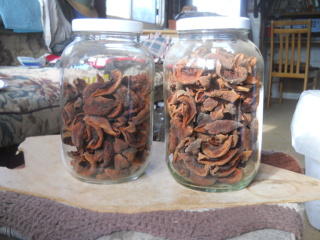
That is a great harvest! Do you eat them dried as a snack or do you also hydrate them for pies and such?
Hi Ellen,
Yes, we are thankful!
We've been snacking on them dried, but you sort of have to let them sit in your mouth a bit for them to soften up. However, interestingly that you ask, Sue yesterday tried soaking them to see how that would work — not very well by afternoon, but by this morning, they were soft as normal fruit! Nice! So, I don't know if they'll be used for anything else now, but at least we know that works pretty well.
Thanks for saying hello!
— David
I really like the idea of dehydrating foods using a solar energy. In Florida the food is more likely to grow mold than dry sufficiently for storage. I was just wondering why you didn't can them. I probably would have made preserves, spiced slices, and pie filling. Summer can be a very busy time for farmers and canning is a lot of work. Or maybe you're short on canning jars, storage or both. When I can there are always things to share and the products seem more versatile. Can you please elaborate? I never learned how to incorporate dried foods into cooking so am a little hesitant to do so. I enjoy your blog immensely.
Thank you,
Lisa
Hi Lisa,
Yes, the dehydrator works great. Sue does can things, or has made preserves, but the reason why we use the dehydrator is so we don't have to can them — we don't need to use a stove or the fuel to make it work, any nutrients that may get cooked out don't, and we don't have to take the time to do the canning process. It's just a much quicker and more sustainable method. Letting the dried food soak overnight seems to be enough to re-hydrate it (or I suppose all day). It's not like eating it off the tree, but it's not too bad either, and we preserved it in a sustainable way, which makes any loss of taste worth it to me at least.
With the fruit, we usually just eat the dried pieces. You have to let them soak in your mouth some while they soften, but then they just become a chewy, naturally sugary delight! 🙂 We haven't tried dried vegetables yet, although for vegetables we almost exclusively preserve them with lacto-fermentation.
Hope that helps, and thanks for saying hi!
— David